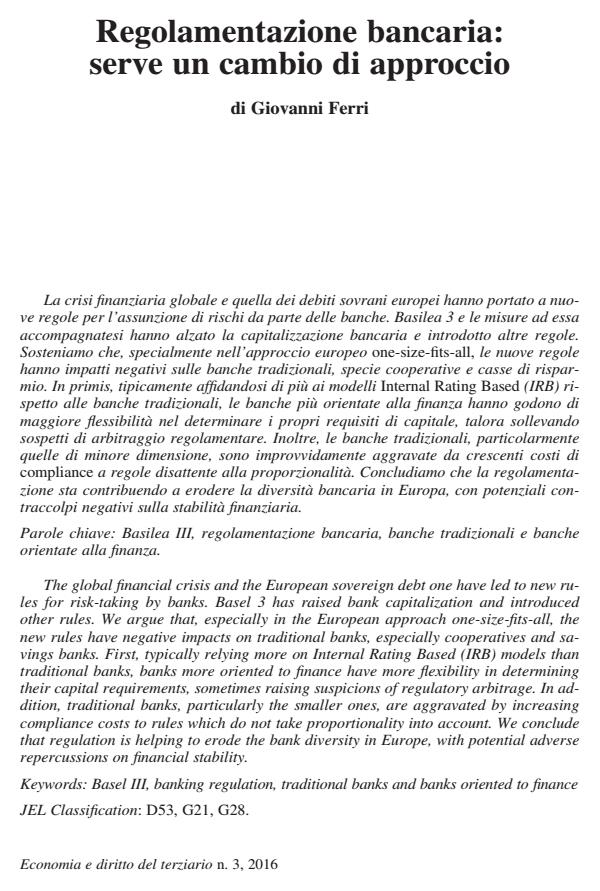Regolamentazione bancaria: serve un cambio di approccio
Titolo Rivista ECONOMIA E DIRITTO DEL TERZIARIO
Autori/Curatori Giovanni Ferri
Anno di pubblicazione 2017 Fascicolo 2016/3
Lingua Italiano Numero pagine 26 P. 383-408 Dimensione file 492 KB
DOI 10.3280/ED2016-003003
Il DOI è il codice a barre della proprietà intellettuale: per saperne di più
clicca qui
Qui sotto puoi vedere in anteprima la prima pagina di questo articolo.
Se questo articolo ti interessa, lo puoi acquistare (e scaricare in formato pdf) seguendo le facili indicazioni per acquistare il download credit. Acquista Download Credits per scaricare questo Articolo in formato PDF

FrancoAngeli è membro della Publishers International Linking Association, Inc (PILA)associazione indipendente e non profit per facilitare (attraverso i servizi tecnologici implementati da CrossRef.org) l’accesso degli studiosi ai contenuti digitali nelle pubblicazioni professionali e scientifiche
La crisi finanziaria globale e quella dei debiti sovrani europei hanno portato a nuove regole per l’assunzione di rischi da parte delle banche. Basilea 3 e le misure ad essa accompagnatesi hanno alzato la capitalizzazione bancaria e introdotto altre regole. Sosteniamo che, specialmente nell’approccio europeo one-size-fits-all, le nuove regole hanno impatti negativi sulle banche tradizionali, specie cooperative e casse di risparmio. In primis, tipicamente affidandosi di più ai modelli Internal Rating Based (IRB) rispetto alle banche tradizionali, le banche più orientate alla finanza hanno godono di maggiore flessibilità nel determinare i propri requisiti di capitale, talora sollevando sospetti di arbitraggio regolamentare. Inoltre, le banche tradizionali, particolarmente quelle di minore dimensione, sono improvvidamente aggravate da crescenti costi di compliance a regole disattente alla proporzionalità. Concludiamo che la regolamentazione sta contribuendo a erodere la diversità bancaria in Europa, con potenziali contraccolpi negativi sulla stabilità finanziaria.
Parole chiave:Basilea III, regolamentazione bancaria, banche tradizionali e banche orientate alla finanza.
Jel codes:D53, G21, G28
Giovanni Ferri, Regolamentazione bancaria: serve un cambio di approccio in "ECONOMIA E DIRITTO DEL TERZIARIO " 3/2016, pp 383-408, DOI: 10.3280/ED2016-003003